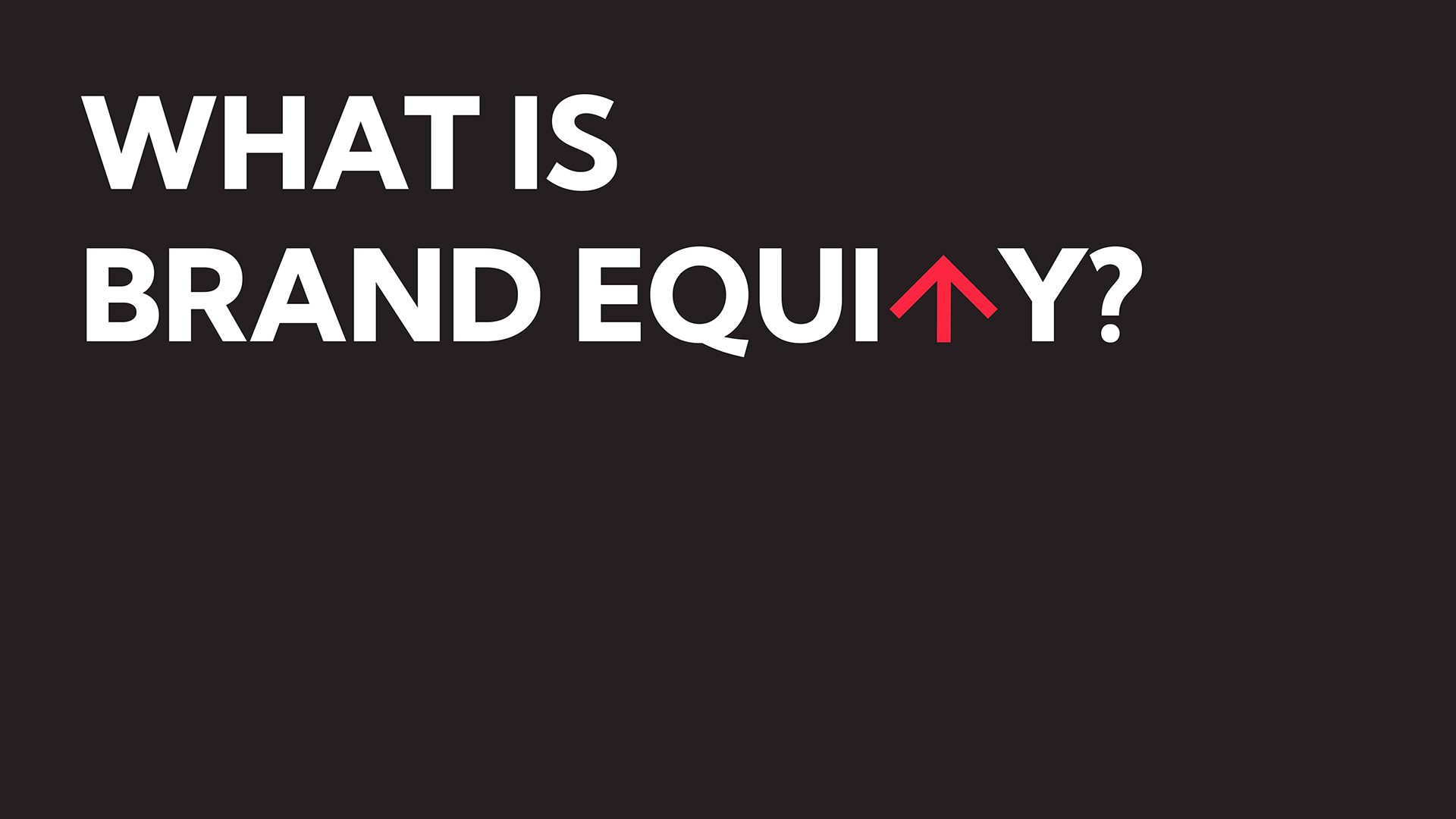What is brand equity?
AND HOW CAN YOU MAKE SURE YOUR ASSETS ARE ALIGNED FOR GROWTH
Is there a brand that you would pay more for just because you’re loyal and you trust it? Even when there is another that tastes/looks the same or is cheaper? brand equity. And it can be one of your most valuable brand assets.
For me, it’s Apple. So cliché for a creative type I know. But no matter how much small things frustrate me (like the distinct lack of ports on a laptop), or how much more expensive they are – they will always have my heart. And my money.
When built up over time, brand equity can result in higher profit margins, more loyal customers, and a sense of prestige that goes far beyond the product itself.
>And sometimes, a brand’s identity and positive brand associations can be so strong that the brand name itself becomes the value of the purchase — not the product itself.
Let’s delve into brand equity, why it matters, and how you can start building it for yourself by developing a strong and consistent brand positioning, identity and aligning your valuable brand assets.
WHAT IS BRAND EQUITY?
Brand equity is the value that a brand has beyond its physical assets. It’s the perception of your brand in the minds of your customers. Put simply, brand equity represents the value of a brand.
Coca-Cola has one of the highest brand equities in the world, so is always a good example to throw into the mix. As Investopedia explains:
“With a profit margin between 25-30%, Coca-Cola is often rated the most valuable soda brand in the world. However, the brand itself represents more than just the products — it’s symbolic of positive experiences, a proud history, even the U.S. itself.”
Customer loyalty for Coca-Cola is in large part thanks to its perceived value beyond the product itself.
COMPONENTS OF BRAND EQUITY: DAVID AACKER’S MODEL
The concept of brand equity was first introduced in the 1980s by David Aaker, a marketing professor at the University of California, Berkeley. Aaker says there are four components of brand equity:
- Brand loyalty – customers’ commitment and preference for a specific brand over others
- Brand awareness – the extent to which consumers recognise and recall a brand
- Brand associations – perceptions linked to a brand, including attributes, values, and emotions
- Perceived quality – customers’ perception of a brand’s products or services and their superiority and value compared to competitors
WHY DOES BRAND EQUITY MATTER?
Alongside the benefits we’ve already discussed, like brand loyalty and brand awareness (resulting in higher profits – hurrah!), there are other benefits of brand equity too.
One of these is the ability to command premium pricing. Brands with strong brand equity can charge higher prices for their products or services. That’s because 46% of customers will pay more if they trust a brand.
Another advantage is the potential for brand expansion. Customers who have a positive perception of a brand are far more likely to trust and try new products or services introduced by that brand. If you do this, make sure you set up your brand architecture correctly.
Finally, brands with established brand equity often demonstrate resilience in times of crisis or negative publicity.
It’s a terrifying and sad example but think about Johnson & Johnson. In 1982, packets of Tylenol were poisoned, resulting in tragic deaths. However, Johnson & Johnson’s immediate recall, the introduction of tamper-evident packaging, and established reputation for trust and quality meant that the brand witnessed remarkable loyalty from customers.
HOW DO YOU BUILD BRAND EQUITY?
As CEO of Amazon, Jeff Bezos says: “A brand for a company is like a reputation for a person. You earn reputation by trying to do hard things well.
When it comes to building your brand’s reputation and, therefore, your brand equity, you need to deliver on your brand promise time and again, no matter what. To do that, you’ll need to make sure that you have truly consistent brand assets and that all your brand elements, such as your messaging, marketing materials, and customer interactions, are consistent and reflect your promise.
Here’s how:
- Develop a strong brand identity
To develop your brand identity, you first need to clearly define your brand’s values, mission, and unique selling proposition, and consistently communicate them through your messaging and visual elements.Don’t just think of your visual brand either, but all of your brand elements including tone of voice. Consistency, consistency, consistency. That’s the magic word. - Be authentic at all times
Customers value authenticity, with 88% of consumers saying that authenticity from brands is important when deciding which brands they like and support, with 50% saying it’s very important.The lesson? If you want to build brand equity, don’t try and be something you’re not, as it’s likely your desired customer will see right through you. If you want to know how to create an authentic brand that your customers will love, this will help. - Provide exceptional customer experience
Brand equity is about leaving an incredible impression with your customers and that means consistently (yep, the C word is back again) prioritising customer satisfaction. Always go above and beyond to exceed expectations at every touchpoint possible. - Build brand awareness
Use all the marketing tools at your disposal to build brand equity and keep your brand in the mind of your customer. Use marketing campaigns to increase brand visibility and reach your target audience and keep your content consistent on brand assets and channels such as social media, content marketing, and advertising. - Cultivate brand loyalty
Add brand loyalty initiatives to your brand strategy, to engage customers, encourage repeat purchases, and foster brand advocacy. Offer loyalty programs, personalised experiences, and incentives. Aussie chain Boost Juice does this well with its Vibe Club loyalty program. And don’t forget your employees here – an engaged, loyal team become the foot soldiers for your brand, delivering better customer experiences and increase your marketing footprint.
How do you measure brand equity?
Measuring brand equity is no easy task, and there are multiple ways it can be done, including:
- Focusing on perception: Monitor social media and other digital assets for sentiment and emotion and consider conducting a brand equity survey, which asks your customers about their perceptions of your brand and its competitors
- Financial indicators: Market share, revenue, and profitability can all be a strong indicators of your brand equity
- Brand loyalty: Keep track of retention rates, frequency of purchase, customer satisfaction levels and general feedback
Combining these different metrics can help you understand if you’re successfully building brand equity and help you identify what brand assets you need to invest in.
ARE YOU BUILDING BRAND EQUITY?
Just as positive brand equity can drive sales and increase loyalty, negative brand equity can sink sales and damage reputations. It’s important to take control and do what you can to build positive brand associations. Don’t leave your brand equity solely in the hands of your customers.
Take the time to align your brand assets and make sure you’re consistently, truly delivering on what your customers have come to expect from your brand. From there, you can grow brand equity and take your profits to the next level.
Feeling stuck? We’re committed to helping our clients foster meaningful relationships with their customers, crafting genuine brand narratives, and creating growth that lasts. If you’re interested in discovering how we can help, we’d love to hear from you.









